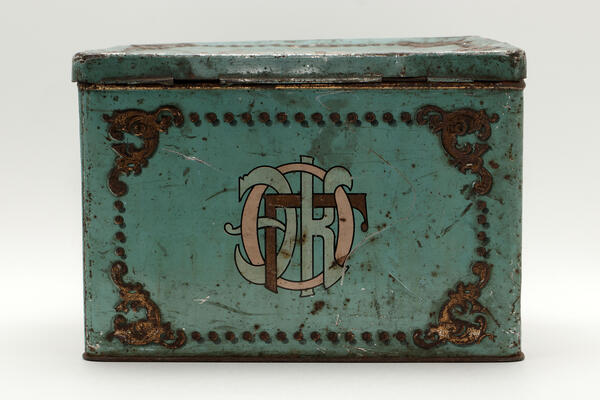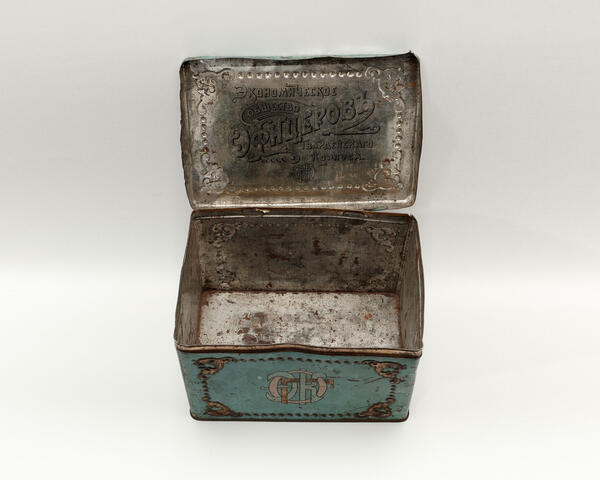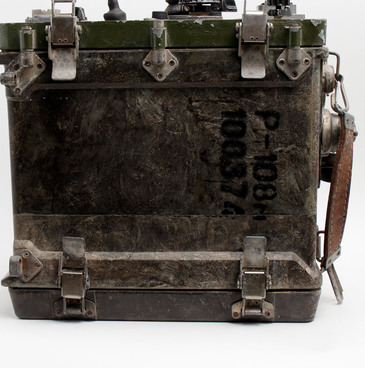The tin box with the emblem of the Guards Economic Society was made at the metal factory of Grigory Abramovich Khaimovich located on Vasilyevsky Island in St. Petersburg. The full name of the company was “Steam Factory for the Manufacture of Tin and Copper Products, Sheet Lead for Tea, Soap and Commercial Packaging, Tea Seals, Tin Foil and Tinplate”.
The owner of the factory, Grigory Khaimovich was a hereditary honorary citizen of St. Petersburg. He was awarded silver medals at exhibitions in Moscow and Riga, two bronze medals in St. Petersburg, as well as one silver in Nizhny Novgorod — “For the sizable production and variety of products made of tin, zinc and galvanized iron”.
After 1912, the factory was called “Joint-Stock Company for the Manufacture of Tin Products, formerly owned by G.A. Khaimovich”. It produced a variety of tinplate products, such as tin foil and cans for candy, salt, and sugar. The products of the Khaimovich factory were distinguished by their quality and aesthetic design.
“Korob” and “korobya” (in Russian “korob” means “box”) are two Russian units for measuring volume that were used before the metric system was adopted. In Russia of the Middle Ages wheat and oats were measured in korobya. Korob was introduced later — in the late 18th century in the Urals — to measure coal. The word “korobka” denotes a container in which one can transfer a certain volume of goods.
The box implies that there is a rigid frame, which, unlike a bag, allows one to accurately measure the amount of its contents. The box’s rectangular shape optimizes storage and transportation of goods by saving space. Many compound words, idioms and expressions are derived from this word — for example, “black box” and “gearbox”. They denote items that have not looked like a box for a long time, but are called so for historical reasons.
In the 19th–20th centuries, tea was most often stored in small tin boxes, which was a very popular drink in Russia. In 1814, tea accounted for two-thirds of all imported goods. In 1814, tea accounted for two-thirds of all imported goods. In the following decades, up to three tons of tea were supplied to Russia from China annually. The most popular variety was “baikh” tea, but flower, compressed and so-called “brick” tea was also sold. The latter was sometimes made from long summer shoots with the addition of salt, oil, flour and spices.




